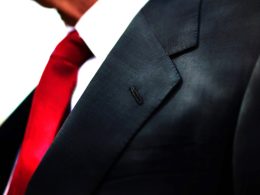What CEOs Said Last Week: "Animal Spirits have returned"
by Scott Krisiloff, CIO, Avondale Asset Management
Each week we read dozens of transcripts from earnings calls and presentations as part of our investment process. Below is a weekly post which contains some of the most important quotes about the economy and industry trends from those transcripts. Click here to receive these posts weekly via email.
This Week’s Post: Animal Spirits
Keynes’ legendary “animal spirits” appear to have returned to the US economy. In many ways it’s surprising that Brexit was the catalyst for markets to rebound, but Central Banks are in firm control of investor psychology and there has been upward pressure building in the economy for some time now. A lot of the froth feels like it has burned off and depressed industries like energy may be on the upswing. Still, low interest rates underpin the entirety of western capital markets and if the global economy really is improving then interest rates wont be able to stay low for too much longer–one would think.
Special thanks this week to our new contributors: Erick Mokaya, Milan Goyal and Remy Gill. Their work is scattered throughout this week’s piece. Erick has been particularly helpful highlighting events happening in Europe that we otherwise may have missed. If you would like to help contribute quotes to these weekly pieces, please contact us by responding to this email.
The Macro Outlook:
Animal spirits have returned
“the animal spirits are back in North America” —Halliburton CEO Dave Lesar (Oil Service)
The market’s reaction to Brexit has been surprising
“I think you could have sat there those couple days after Brexit and if you were forecasting the next month of activity, I think you might have been surprised if we could have known in advance that equity markets would rebound so strongly, there would be a rebound in currencies, and the world would sort of normalize” —Goldman Sachs CFO Harvey Schwartz (Bank)
The quick rebound may mean that better things are on their way
“so this normalization was so quick that it actually may be something that’s a better harbinger in the near term usually following one of these events for activity levels” —Goldman Sachs CFO Harvey Schwartz (Bank)
Or it may just be a sign that we are all well trained by Central Bankers
“Following the UK referendum on EU membership, our assessment is that euro area financial markets have weathered the spike in uncertainty and volatility with encouraging resilience. The announced readiness of central banks to provide liquidity, if needed, and our accommodative monetary policy measures, as well as a robust regulatory and supervisory framework, have all helped to keep market stress contained.” —ECB President Mario Draghi (Central Bank)
On the other hand maybe Central Bankers have finally succeeded in breaking the global depression psychology
US consumer confidence is strong
“Spending on big ticket items was especially robust and sentiment survey showed that consumer confidence remains strong. Home sales continue to rise with the second quarter on pace set the strongest quarterly sales volume since 2007.” —Wells Fargo CEO John Stumpf (Bank)
M&A pipelines are strong too
“I think the pipeline remains pretty strong. And actually on the heels of Brexit, we saw actually quite good deal flow. You saw debt capital markets, you saw equity capital markets, you saw M&A getting executed getting announced. So I would say the pipeline for the third quarter remains pretty strong and provided we get reasonable markets. We’ve got an environment in which we can continue to get these things done. So it feels pretty good.” —Citibank CFO John Gerspach (Bank)
Comerica had a record breaking month in its mortgage business
“summer home sales combined with the decline in mortgage rates made June a record month in our 50-year history in the Mortgage Banking business.” —Comerica CFO David Duprey (Bank)
GM saw “outstanding performances” in North American, China and Europe
“As I mentioned, our strong quarter was underpinned by outstanding performances in North America, China and Europe…We had the best Q2 light truck retail sales in nine years and the best mid-size retail pickup sales in 11 years.” —General Motors CEO Mary Barra (Automobiles)
Domestic steel markets have been improving
“2016 has certainly provided a changing landscape to the domestic flat roll market. Several positive macro shifts have resulted in significantly improved flat roll product pricing…supply side drivers have led to much improved market dynamics. Our flat roll steel mills operated at full capacity during the second quarter, supported by the automotive and construction sectors.” —Steel Dynamics CEO Mark Millett (Steel)
Hospital admissions and surgical procedures are up
“we are seeing a pick up in terms of hospital admissions and surgical procedures. I think hospital admissions are up around 3%. We think the procedures are probably up around 3.5%…if we look at the core growth rate in the medical hospital device area, we’re encouraged by some of the recent trends that we’re seeing.” —Johnson and Johnson CEO Alex Gorsky (Healthcare)
The toy industry is growing
“If you look around the world, the industry is growing at quite a good rate. In most markets around the world it’s growing from mid to high single digits. In a few markets it’s growing as high as double digits, including Spain, Italy, Russia, and Mexico. Our business continues to grow around the world.” —Hasbro CEO Brian Goldner (Toys)
And there’s still room for improvement
Industrial segments are still a little weak
“Relative to the macro environment, the steel-consuming sectors that were weak in 2015 such as energy, heavy equipment, and agriculture will likely remain so in 2016.” —Steel Dynamics CEO Mark Millett (Steel)
But the oil industry sees the light at the end of the tunnel and that could spark industrial activity
“Oil reaching $50 per barrel, even for a brief time, was a critical emotional milestone for our customers as was being able to buy a strip above $50 per barrel. So maybe it can be summed up best by one customer who told me, Dave, it’s actually a light at the end of the tunnel and not an incoming train.” —Halliburton CEO Dave Lesar (Oil Service)
The froth from a year and a half ago appears to be gone
“I think there is just a lot of caution out there. All that frothy, robust enthusiasm of a year and a half ago is definitely not there now. And yet the market is at a near high, but in our businesses that enthusiasm, or at least that attitude, doesn’t seem to be that lit up” —Abbott CEO Mile White (Medical Device)
Corporate clients are still conservative with discretionary spending
“the largest corporate clients…continues to be a tough segment. I don’t think there’s many of the Fortune 500 who are going on calls like we’re having right now and talking about growing their T&E budgets.” —American Express CEO Jeff Campbell (Payments)
Hiring softened in tech and financial services
” I think overall the market for IT is probably slightly softer, but there are segments within that SMB for instance or healthcare that are still strong, and financial markets probably not as strong” —Manpower CEO Jonas Prising (Temp Staffing)
Inventories are relatively lean
“So overall we continue to see inventory levels as being very healthy. I think that the PC, the worldwide PC supply chain has moved towards a stance of being fairly lean and fairly cautious, and we see that continuing.” —Intel CFO Stacy Smith (Semiconductors)
The housing industry could still build a lot more homes
“Government data as of May showing new home sales of 550,000 puts U.S. housing on track to deliver another year of roughly 10% growth. The trend is certainly positive. But after five years of recovery, we still remain well below the 50-year average, which is why we believe the recovery has a few years left.” —Pulte Home CFO Robert O’Shaughnessy (Homebuilder)
Interest rates are the lone fly in the ointment. They are sending conflicting signals
” Markets expressed seemingly inconsistent expectations as the quarter progressed. The 10-year treasury yield declined to 1.5%, suggesting slow growth, disinflation and a flight to safety amidst Brexit concerns. Yet, oil and commodity prices continued to rally. These conflicting signals are hard to reconcile” —Cohen & Steers CIO Joe Harvey (Asset Management)
If this is all true then the yield curve cannot possibly stay where it is
“I personally think the flat rate scenario that everybody projecting is overstated. The underlying strength of our economy is not great, but it’s good. Fed, I believe, clearly knows they need to raise rates, and I think they will the minute they see a window, which could still easily happen at least one rate increase towards the fall.” —BB&T CEO Kelly King (Bank)
International:
Most companies are not expecting a material impact from Brexit
” when we look at our full view of the year, we don’t see an impact, if you will, that has any real materiality on us.” —IBM CFO Martin Schroeter (Enterprise Tech)
“when we talk to our bankers, if we continue in this low growth environment, they don’t feel sitting here today that Brexit is going to be a headwind but obviously it’s going to be a dynamic situation.” —Goldman Sachs CFO Harvey Schwartz (Investment Bank)
The true impact may unfold over a longer period of time
“The majority of firms spoken with did not expect a near-term impact from the referendum result on their capital spending. But around one third expected some negative effects over the next twelve months, with reports of a ‘risk off’ approach to expenditures and some imminent plans for spending slipping.” —BOE Agents Summary of Business Conditions (Central Bank)
The vote is expected to have a negative effect on hiring activity
“As yet, there had been few reports of major alterations to businesses’ employment intentions. But the vote to leave was expected to have a negative effect overall on hiring activity over the coming twelve months.” —BOE Agents Summary of Business Conditions (Central Bank)
Deal flow will likely slow as decision makers look for clarity
“In the near-term transaction activity in the U.K. should be slower as decision-makers for businesses remains uncertain and market participants digest the potential impacts of the many different ways that Brexit can evolve.” —Blackstone CEO Steve Schwarzman (Private Equity)
Prices will likely rise as a result of currency devaluation
“where we see cost going up, take for example the UK with the enormous currency devaluation we’ve seen in the British pound, we will look at pricing.” —Unilever CEO Paul Polman (Consumer Packaged Goods)
There is evidence that consumers are becoming hesitant
“There had been little evidence of any impact on consumer spending on services and non-durable goods, although there were some reports of consumers becoming more hesitant around purchases of higher-value goods.” —BOE Agents Summary of Business Conditions (Central Bank)
But there is also evidence that spending has rebounded
“We did see a noticeable slowdown in this growth in the first several days immediately after the Brexit vote. But that growth has since rebounded to its prior strong levels.” —American Express CEO Jeff Campbell (Payments)
France’s terrorism problem has economic impacts too
“I don’t need to remind you of the terrorism we’re dealing with in France, which is not only horrific, but it causes challenges to the social and business environment there, where it gets harder to get people to come and leave their house, and come to a Tupperware Party.” —Tupperware CEO Rick Goings (Consumer Prodcuts)
Financials:
Banks are giving up on interest rate increases
“At the time of our January call, the forward rate curve was implying two actions by the Fed in calendar year 2016. There now appears to be a little prospect for even one increase this year, perhaps not even until mid-next year to late next year…Our ability to maintain a stable year-over-year margin will be impacted by that changed interest rate outlook” —M&T Bank CFO Darren King (Bank)
Lower rates will have a meaningful impact on bank profitability
“The lower long-term rates will have an impact on our second half results, if the rates remain at these low historic levels. ” —US Bank CEO Richard Davis (Bank)
Banks are racing to cut costs to try to maintain margins
“The economy is relatively slow. We project a relatively low flat yield curve for a period of time. And as a result, we are accelerating our focus on expense reductions.” —BB&T CEO Kelly King (Bank)
“can we grow earnings without rates improving? We believe we surely can. We can do that by continued success on things like expense management” —Bank of America CEO Brian Moynihan (Bank)
Generating operating leverage is becoming much harder though
“We’re not giving up on positive operating leverage, but it’s getting a lot harder.” —US Bank CEO Richard Davis (Bank)
“Look it’s a simple statement to make that it is tougher to get to positive operating leverage without help…from interest rates.” –PNC CEO Bill Demchak (Bank)
Low rates aren’t just impacting banks, they are compressing margins across all of financial services
“there’re a lot of forces here that are compressing margins generally. And the RIAs aren’t immune to that.” —TD Ameritrade President Timothy Hockey (Broker)
Insurance companies are trying to drive profits by reaching for market share
“we continue to see a tremendous amount of capital in the market…in a market like this where you can see carriers do some really squirrely things in terms of pricing sometimes you just see crazy things, they just — right they do pricing that just doesn’t make sense where they blow something out of the water and we don’t know how long that’s going to last or if its real or whatever the case may be but sometimes you lose a little bit of business like that.” —Brown and Brown CEO Powell Brown (Insurance Broker)
Hedge fund managers are excited when their redemptions are lower than their peers
“My guess is that our redemptions that we’ve received as a percentage of capital are probably among the lowest in the industry, and that’s really because we benefit from a very stable capital base and that’s because our investors have been incredibly supportive of us.” —Pershing Square CEO Bill Ackman (Hedge Fund Manager)
Financial services firms that are undersized may have to seek strategic alternatives
“As I have indicated previously, our board and management team are committed to evaluating all opportunities to enhance shareholder value…We know we must earn our right to remain independent.” —Comerica CEO Ralph Babb (Bank)
If we can manage through this we can manage through anything
“If we can manage through these very worse time which is continued zero interest rate increases and very, very low ten year. We can manage through just about anything” —US Bank CEO Richard Davis (Bank)
Consumer:
China has moved rapidly to an e-commerce economy
“It’s very hard to read the Chinese market…because the rapid shift to e-commerce is confusing…You can go to China now and really see empty stores when you go into hypermarkets and supermarkets…it’s frightening the speed at which this is changing, just like they leapfrogged the landline and moved to mobile phone…None of the millennials go to a store anymore. So, the speed with which this is changing is mind-boggling, and I think not many people predicted it” —Unilever CEO Paul Polman (Consumer Packaged Goods)
The problem for brick and mortar retailers is that all of their profitability was generated by the sales that they are losing
“because of the phenomena of the e-commerce, the rest of the retail is struggling. And although there’s still 80% of the people buying in the rest of the retailers…it’s the gearing that they’re missing, it’s the incremental sales that was giving them the profitability that is disappearing.” —Unilever CEO Paul Polman (Consumer Packaged Goods)
Technology:
The PC market is a little better than many thought it would be
“the PC market was a little bit better than we thought. And particularly in developed markets, the PC growth was better than we thought.” —Microsoft CFO Amy Hood (Enterprise Software)
5G cellular networks may start to get deployed sooner than expected
“I think in general, if you’d have asked me that question, a year ago, I would have said that it would have happened closer to 2020. Certainly over the last year and accelerating here over the last quarter there has been a real pull to push that in or to pull that in closer to 2018/2019 timeframe depending on what the deployment is.” —Qualcomm CEO Steve Mollenkopf (Semiconductors)
Large increases in data consumption will continue to drive cloud growth
“if you look out into 2020, that average person will generate about 1.5 gigabytes a day of data off…your posts and pictures and all that kind of information. If you take a look at the average autonomous car in 2020, the estimates right now are it will throw off about 40 gigabytes a minute of data. …If you take something like our replay technology that is filming in virtual reality, a basketball game or a football game, it’s throwing off 200 gigabytes a minute…So it’s that growth in data and the need to both process it at the edge and then through the data center and into the cloud, to be able to store it, to be able to apply machine learning to all of those applications. Those all tell me that the cloud is going to continue to grow.” —Intel CEO Brian Krzanich (Semiconductors)
Technology is a means to solve real world problems
“You can’t get so locked up on the technology itself that you lose focus on what type of problem the customer is trying to solve. The customer is not trying to get cloud, they’re not trying to get software defined network but rather they are trying to solve business issues that they’re trying to get at. We’re going to remain agnostic on the technology, whatever our customers need, we’re going to do.” —Cisco CEO Chuck Robbins (Enterprise Tech)
Healthcare:
There is likely to be more consolidation among healthcare providers
“I think we’ve been pretty consistent in our thinking and in our projections about the likely increase in consolidation among providers and hospitals…And as systems feel continuing pricing pressure, we think that will manifest itself by them having consolidation…we do believe that that will be a longer secular trend that’s going to continue” —Johnson and Johnson CEO Alex Gorsky (Healthcare)
Medical costs are growing at 6% per year
“Commercial medical trend remains consistent with the original outlook of 6% plus or minus 50 basis points.” —United Health CEO Stephen Hemsley (Medical Insurance)
Insurance for small employers has increased in cost much faster than for larger companies
“Similar to previous quarters management of healthcare cost remains front and center for our customers, as small employers are generally experiencing rate increases of 8% to 12% while larger employers are seeing rates, rates that are generally flat up slightly.” —Brown and Brown CEO Powell Brown (Insurance Broker)
Energy:
Halliburton is calling the bottom for oil activity
“based on the recent improvements to North American activity, I believe that this second quarter will mark the trough for our earnings.” —Halliburton CEO Dave Lesar (Oil Service)
Oil companies feel like they have survived the storm and have a spring in their step
“I spent a large amount of time with customers late in the quarter taking their pulse and I can tell you there was a growing survivor mentality out there, and you can’t underestimate the positive change in attitude that we’re seeing in our North American customers. There is a spring in their step that I didn’t see earlier in the year and in almost every case, they are talking about adding rigs, buying assets or doing something value accretive. In short they are getting back to business.” —Halliburton CEO Dave Lesar (Oil Service)
The credit picture appears to be stabilizing
“this quarter we had no material energy charge-offs, in fact we have nice recovery on one of our credits. So we feel like we’ve got…the energy issue behind us. ” —US Bank CRO P. W. Parker (Bank)
“Also noteworthy is that, 100% of these non-accrual loans are fully current on interest payments, including the nine loans we have in bankruptcy. The reserve for Energy loans is over 8%. And remember, those reserves may not turn into ultimate losses” —Comerica CFO David Duprey (Bank)
“In the past quarter, credit defaults amounted to about 0.3% of budgeted revenue annualized…We’ve got a strong and diversified customer base, which includes integrated energy majors, utilities and end-users. So the credit picture is stabilizing.” —Kinder Morgan CEO Steve Kean (Pipelines)
Oil demand remains strong
“On the demand side, if we look at the crude oil market, the IEA has increased demand in 2016 to approximately 1.4 million barrels of oil per day. The U.S. is now using over 10 million barrels per day of gasoline. These are near record levels. Recent Chinese export coupled with strong demand out of India are at near all-time highs. Supply and demand will balance as they have in all past market disruptions.” —Core Labs CEO David Demshur (Oil Service)
We need to find two Saudi Arabias worth of oil in the next five years
“the last 2 years has been a period of significant under investment, where global CapEx has been reduced by nearly $400 billion. As a result, the industry will have to find a lot of new barrels in the next 5 years…most agree we will need between 18 and 22 million barrels per day of new production by 2021. Meaning we have to find nearly 2 Saudi Arabias worth of production in the next 5 years.” —Halliburton CEO Dave Lesar (Oil Service)
Agriculture:
A lot of corn was planted this year that wont be able to be stored
“if you look at the crop there was something like 6 million more acres of corn planted this year and it’s still dependent upon kind of the weather and the harvest, but right now it looks like it’s going to be pretty decent yields from the current crop. And so if you look at the pretty decent yields from the current crop if you look at the high storage levels…it suggests that there’s going to be opportunity to move grain in the second half of the year at a higher run rate than what we saw in the first half.” —Union Pacific CMO Eric Butler (Railroad)
Full transcripts can be found at www.seekingalpha.com
Copyright © Avondale Asset Management















